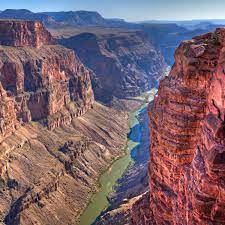January 31 is right around the corner, and once again, it appears that the deadline to establish new water usage cutbacks for the seven-state Colorado River Basin will slide. The talks were ordered by the U.S. Bureau of Reclamation after the states missed their August 2022 deadline for voluntary usage reductions. But while talks have continued, progress is well — dammed up — as they struggle to address both short-term and long-term demands for this precious but finite resource.

States that divide the flow of the Colorado River. Image courtesy of Mission 20212 Clean Water.
Immediate cutbacks aren’t the only issue facing the seven states that make up the Colorado River Basin. The impasse is that the upper basin states say they’ve been conserving all along and sending water down-river, while the lower basin states have continued a rate of water use that is depleting the two major reservoirs faster than they can fill.
Both the upper and lower basin states want the other to use less.
The upper basin states are going to have to figure out how to collaborate in implementing a $125 million, water conservation pilot program (known as “demand management”). As part of the pilot, they may have to face whether that could lead to a permanent water conservation program for the upper basin.
Regardless of where blame is placed, the entire Colorado River Basin is now in the third-year of its emergency drought plan, known as the Drought Response Operations Agreement. Without an immediate and crisis-level response, by mid-summer water levels at lakes Powell and Mead are expected to fall below the level where the hydroelectric cams can operate — plunging more than 40 million people into an energy crisis.
The prospect of severe drought may appear to have been mitigated in California (due to the atmospheric river of storms over the past several weeks) but this is wishful thinking. As it turns out, most of that freshwater flowed back into the ocean because the state has no infrastructure in place to capture that water in its reservoir system.

The Colorado River. Image courtesy of The Guardian
At a meeting earlier this week in Aurora, Colorado of the Colorado Water Conservation Board, Colorado Water Conservation Board Director Becky Mitchell who also represents Colorado on the Upper Colorado River Commission, reiterated that the three lower basin states of California, Arizona, and Nevada need to do more.
“The basin states, the federal government, and the tribes have been working collaboratively and tirelessly to find potential points of consensus on short-term actions to protect lakes Powell and Mead,” said Mitchell. “I continue to believe strongly that the Lower Basin states must take action to reduce their demands out of Lake Mead.”
Snowpack reports for the high mountains of Colorado in the west, and in Utah, are encouraging so far, but there is still a lot of winter ahead of us.







Recent Comments